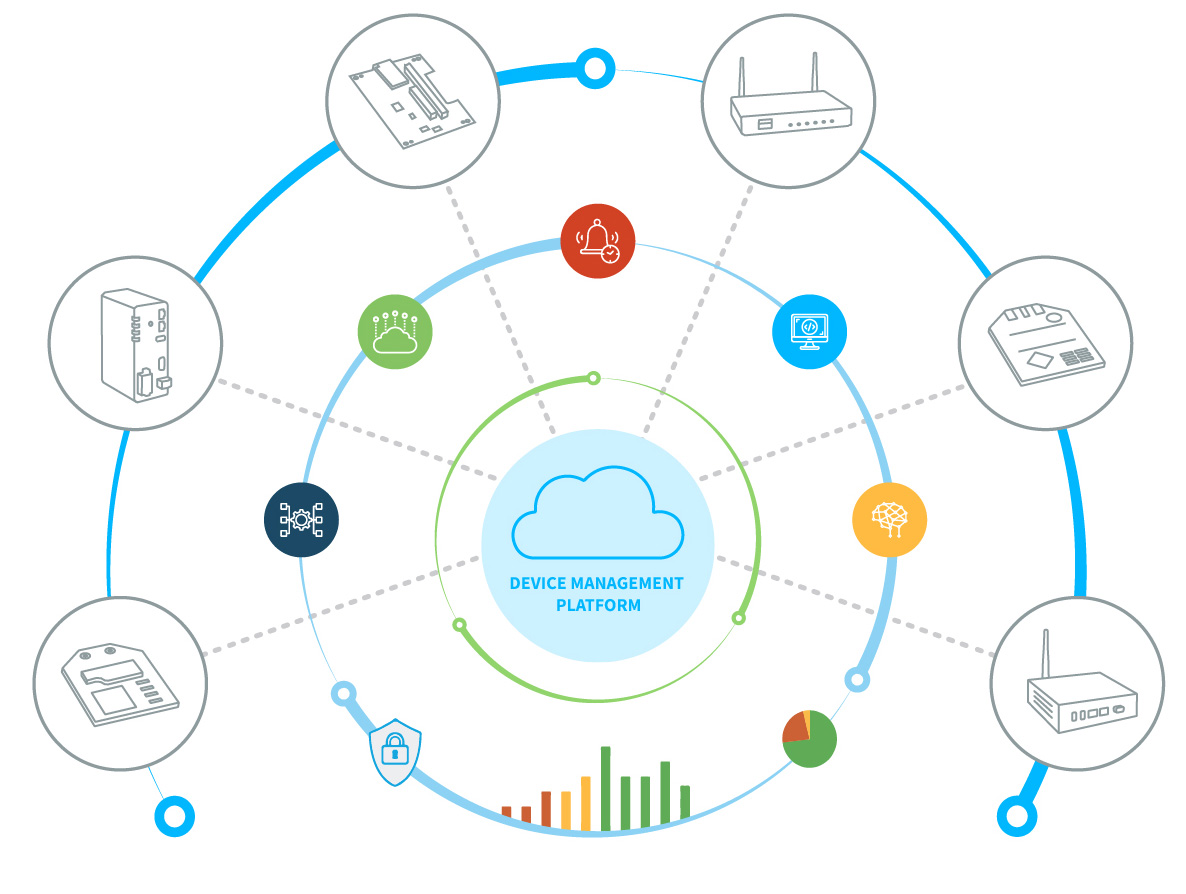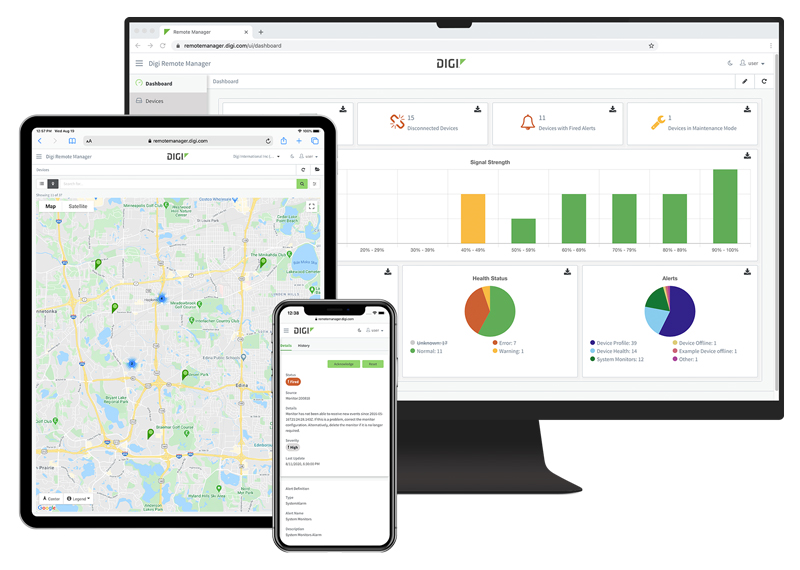If you aren’t currently embracing network orchestration, you may be leaving money on the table. That’s because network connectivity is likely a big part of the services you deliver to your customers. Also likely, your network isn’t as optimized as the rest of your products and services. As IT service costs rise due to high fuel costs and ongoing inflation, companies look to trim budgets.
But what if you could trim the budget and improve your network at the same time? That’s where network orchestration plays a key role. Beyond efficiency, it can also prepare your organization for “what’s next. Let’s take a closer look at what network orchestration is all about and how it can improve efficiency.
What Is Network Orchestration?

Network orchestration is an important form of automation that has become popular as networks get larger and more complex. Network orchestration coordinates the management of one or more network interactions between people, devices and systems. It ensures they are secure, efficient, and effective.
Any organization can benefit from network orchestration because of the efficiencies it creates. It can perform routine tasks and free your IT staff to focus on more complex work. It can automate tasks so that you don’t have to hire additional staff. Best of all, it allows you to scale solutions faster than your competitors.
Here’s our definition of network orchestration:
Network orchestration is the automation of entire rule-based processes involved in setting up and managing network devices, applications, and services.
But how does this differ from traditional network management? Let’s take a closer look.
What Is the Difference Between Management and Network Orchestration?

Network management includes all activities related to managing the day-to-day operations of an enterprise network. Network managers track performance, configure devices, troubleshoot problems, and ensure security. Also, network managers watch systems so they can respond quickly to outages or other issues.
Network orchestration goes many steps further by automating certain manual tasks such as configuration changes. This can greatly reduce the time required to manage large and complex networks. Orchestration allows network administrators to focus on more strategic initiatives. Additionally, it can help reduce costs. Eliminating the need for IT staff in deployment and maintenance can help scale without adding headcount. Let’s take a closer look at these benefits.
Why Network Orchestration?
.png?lang=en-US)
As your organization grows and expands, your network must grow along with it. At some point, your network management becomes complex and inefficient. This complexity and inefficiency eat into your IT budget and quality of service. According to Enterprise Management, enterprises use over 50 percent of their IT budgets on inefficient network configuration and management. That’s a big percentage.
A Cisco report shows that 95 percent of network changes get done manually. That results in operational costs up to 3 times higher than the cost of the network. Beyond operational costs, manual network management handles up to 80 percent of network failures. In other words, manual network management is eating into your budget and your operational efficiency.
Benefits of Orchestration
Here are the advantages network orchestration offers over traditional network management:
- Increased return on investment - By automating routine processes, network orchestration speeds up your time-to-market for new products or services.
- Better quality of service - When your network supports mission-critical operations, you want to cut mistakes. Network automation greatly reduces errors due to manual intervention for routine tasks such as configuration changes or device deployments.
- Faster response times - Automated processes alert network administrators so they can respond more quickly to outages or other issues.
- Cost savings - As your organization grows, network orchestration automates the increasing number of repetitive tasks done by skilled IT staff without adding new staff. This allows you to scale up while also reducing operational costs.
Who Is Network Orchestration for?
One of the major challenges network managers face is the rising cost of network operations. As the number of connected devices on your networks grow, so does the volume of data. At some point, network growth becomes too complex or unwieldy to manage manually, regardless of your industry.
According to Fortune Business Insights, the industries that already embrace network orchestration include the telecom and IT industries. But manufacturing organizations investing in industrial automation and smart manufacturing will likely lead network automation growth through 2027.
Top Industries Benefitting from Network Orchestration
- IT Services - Network orchestration and automation services enable the configuration, monitoring, troubleshooting and security management of network services while minimizing errors and costs
- Telecommunications – For telecommunication companies, managing complex and mission critical communication networks would not be possible without network orchestration.
- Manufacturing – Smart factory automation requires robust, high-speed, and uninterrupted communication across the many connected machines and devices on the network
- Transportation and Logistics – Smart highways and vehicle-to-everything (V2X) networks will need network orchestration tools and automation for a distributed edge-cloud environment that can support autonomous driving
Network orchestration is an important tool for managing large and complex enterprise networks. By automating certain tasks such as configuration changes, organizations can save time, money, and resources. At the same time, they ensure their networks always remain reliable and secure. Are you a CIO looking for a better way to manage network infrastructure? Or are you a networking director overseeing IT networks? Either way, you must understand how network orchestration differs from traditional network management. Because it is your job to make sure your organization’s infrastructure is running efficiently and securely now—and into the future!
What Is the Difference Between Automation and Orchestration?
Automation and orchestration have similarities but also some important differences. Network orchestration involves automating entire processes and actions across the network. Automation refers to running a single, unmonitored or managed task automatically.
What Is 5G Orchestration?
As 5G begins to scale and add new services, industries such as telecommunications must manage network slicing, IoT and edge devices. And they must do it while providing the service level customers expect. 5G Network orchestration can manage, provision, track and take corrective action to ensure services continuity.
What Is a Network Orchestration Platform?
A network orchestration platform in an integrated set of tools that help to automate, manage, configure, troubleshoot, secure and deploy all your routers, switches, firewalls and other network devices from a single “pane of glass”. As your network grows in scale and complexity, a network automation and orchestration platform is the only cost-effective and efficient way to make network changes across hundreds or even thousands of devices almost instantly.
Get The Network Orchestration Platform That’s Right for You

Digi delivers end-to-end wireless communication solutions to a wide variety of industries and companies whose networks need the most robust, reliable and affordable hardware and software available. Our professional design, implementation and certification teams can help you get started on your network orchestration journey—no matter where you are in the process.
Digi Remote Manager® is our management and orchestration tool that any company can use to maximize efficiency. Advanced cloud-based orchestration capabilities allow users to track and control all compatible devices in many networks from anywhere. The interface is intuitive. It provides an easy way to manage device fleets. It enables businesses to reduce risk, remove complexity, and cut operational costs significantly. It does all this without a change to your current workflow management infrastructure.
With Digi Remote Manager, you get:
- Best-in-class cloud and edge tools designed for rapid device deployment and for managing assets
- Security monitoring of all IoT devices and asset performance and security monitoring with bi-directional communications
- Ability to automate mass firmware and software updates
- Management of edge devices
- Open APIs for deeper insights and control through third-party applications
- Real-time alerts and detailed reports on network health and device conditions
Next Steps